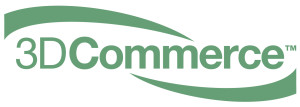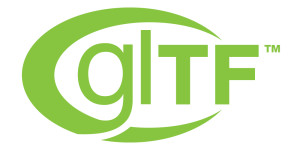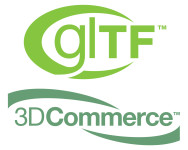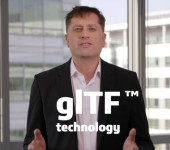SuperDNA's Mike Festa sits down with the Chair of the 3D Commerce Working Group, Dan Frith, to discuss Khronos and the exciting world of 3D Commerce.
3dcommerce tagged news
Voices of VR Podcast: New glTF External Reference Format Combines Multiple Assets into a Scene
The Khronos Group's Alexey Medvedev and Dan Frith joined Kent Bye on Voices of VR earlier this week to discuss the evolution of glTF as a spatial format and the use cases for external references. The recording is now available.
Perfect Corp. Introduces glTF 2.0 Format Support for Its Virtual Jewelry Try-On Solution
Perfect Corp., the leading AI and AR beauty and fashion technology provider and developer of ‘Beautiful AI’ solutions, announced a significant enhancement to its AI-powered Jewelry VTO. The latest update to Perfect Corp.’s system now supports the upload of glTF 2.0 (Graphics Library Transmission Format) files, streamlining 3D file upload and formatting processes for brand partners in the jewelry and watch industries. The update simplifies 3D model creation by allowing brands to upload wireframe details, texture maps and environmental lighting information of products in one smooth workflow.
Avataar Blog: Importance of glTF and Khronos’ Commitment to 3D Standardization
Dan Frith, Vice President of 3D Platform at Avataar.ai and Chair of Khronos’ 3D Commerce Working Group, pens this blog on the evolution of glTF becoming the standard for 3D content, the significance of glTF in the industry, and how glTF will be the key to standardization in the metaverse.
Khronos Releases New glTF Asset Auditor
glTF is a 3D asset format developed by the Khronos Group that is widely adopted, including for use in 3D Commerce web and native applications. The 3D Commerce Working Group at Khronos brings together industry-leading e-commerce companies to remove the barriers to deploying 3D in e-commerce at industrial scale. Today, the Working Group has released the open source glTF Asset Auditor Tool for content creators throughout the 3D Commerce supply chain to use as part of their asset validation pipelines. By enabling rigorous asset QA to be consistently applied across companies, the amount of 3D model reworking can be greatly reduced while increasing compatibility and ease of use for downstream clients.
Although the glTF Asset Auditor has been initially created to address the needs of 3D Commerce, it works with any glTF file and can benefit any industry that needs to reliably deploy and use 3D assets at a pervasive scale. Read the blog to learn more.
ACM ByteCast Podcast: Neil Trevett
In this episode of ACM ByteCast, Rashmi Mohan hosts Neil Trevett as they discuss Neil's career, the evolution of computer graphics, and his role at NVIDIA, where his work focuses on helping developers make good use of GPUs. He also explains the benefits of standardization in industry and how open standards can enable innovation and interoperability. Neil also discusses how 3D is changing the landscape of e-commerce and online shopping and gives his perspective on the Metaverse and how it can leverage other disruptive technologies.
How glTF is Shifting Online Shipping from 2D to 3D
3D Commerce in the Metaverse
Martin Enthed, Innovation Manager at IKEA, joins hosts Patrick Cozzi (Cesium) and Marc Petit (Epic Games) on Building the Open Metaverse podcast to discuss his pioneering work in computer graphics, spatial computing, and 3D development at IKEA, and his advocacy for open standards as Vice President of The Khronos Group.
Update on the Khronos 3D Viewer Certification Program and the Drive for Rendering Consistency
The Viewer Certification Program launched with strong industry support from viewer vendors including Amazon, Babylon.js, CGTrader, Emersya, Epic Games (Unreal Engine), Facebook (Spark AR), Google (
After retooling, the program is now open for business with greater clarity of scope, deeper technical analysis, and a streamlined testing process, and is announcing its first set of officially certified viewers, including products from UX3D (Gestaltor), Unity, Babylon.js, and CGTrader—with many more to come. We’re excited to continue to add viewers to the Viewer Certification Registry, giving artists and retailers the confidence to invest time and resources in glTF asset development, knowing they can rely on consistent performance across multiple viewers.
Experience a new dimension of eCommerce with glTF
Dassault Systemes explores the need for online shopping experiences to grow rapidly by using glTF to minimize the size of 3D assets and speed up runtime processing.
From competition to collaboration: defining industry standards for AR Shopping
Glen Roth recounts the story of the founding of what is now Khronos’ 3D Commerce Working Group from identifying the need, gathering industry cooperation, meeting and discussing the scope of work the group wanted to tackle and why they chose the Khronos Group to host the effort.
Invrsion and Walmart discuss 3D Commerce
In this webinar, Khronos member Invrsion, discusses with Walmart the latest research, innovation, and best practices of 3D Commerce.
Will LiDAR Break the 3D Asset Creation Bottleneck?
The field of 3D Computer graphics has grown from a niche technical curiosity in the mid-1970s to mass appeal and distribution via movies and games. We’ve seen applications grow from flying logos, to highly engaging real-time renderings in games, to synthetic humans and de-aged actors in movies finally crossing the “uncanny valley” to be nearly indistinguishable from reality. However, the creation of 3D assets - computer graphics objects and the worlds they inhabit - still requires highly skilled technicians and artists, presenting a bottleneck to more widespread applications, such as creating 3D graphics for websites and E-Commerce. LiDAR has the potential to alleviate this bottleneck.
Stone Soup is the Recipe for Innovation in 3D Commerce
3D Commerce Working Group Chair, Shrenik Sadalgi, explains how making stone soup (each contributing what they have) makes a meal for the whole village. Over the past year and a half, the working group members have brought their expertise in retail and 3D technology to bear on optimizing the process of using glTF for e-commerce applications to benefit the whole industry. In that time, they’ve managed to improve the utility of glTF for their purposes and create tools to help artists and tool providers achieve more consistent results.
When will 3D commerce become ubiquitous? Perhaps sooner than you think
Shrenik Sadalgi, Chair of the 3D Commerce Working Group, explores how 3D merchandising has demonstrated its potential application as a transformative technology across many industries, and how scaling 3D immersive experiences across platforms and channels is coming soon via the efforts of glTF and the 3D Commerce Working Group.




 Tom Acland, CEO of 3DEXCITE, explaines how the shopping experience is shifting from 2D to 3D thanks to glTF.
Tom Acland, CEO of 3DEXCITE, explaines how the shopping experience is shifting from 2D to 3D thanks to glTF.

